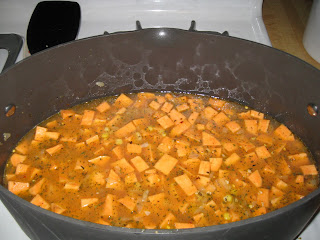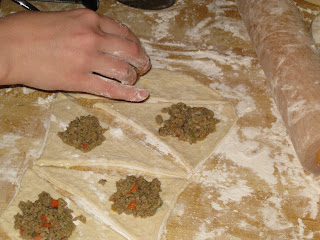Tuesday marks the beginning of National Potato Lovers Month (not to be confused with National Potato Month, which is September). Yes, I know. Google nerd alert! As we toe the threshold of this less than well-known holiday, I’m going to focus on a particular potato that calls Louisiana home – the sweet potato.
The sweet potato actually has two varieties. One type, found in the North, are white-fleshed and drier than the second type, which is grown mostly in Louisiana. This second version is probably the one you’re more familiar with. I grew up calling them yams and refusing to taste them. [Yams actually have brown or black skins and off-white, purple or red flesh, depending on the variety. The African slaves of the Old South thought Louisiana sweet potatoes were reminiscent of this veggie, called nyami in an African dialect and, thus, shortened to yam.]
Even the ones baked with marshmallows on top didn’t make it to my taste buds until last year when I started off with sweet potato fries and realized what I’d been missing out on all my life. Since then I take them anyway I can find them. Baked. Mashed. French Fried. In a casserole. In the slow cooker. In a pie. Call me the Bubba Gump of sweet potatoes.
To pair with the Croque Monsieur and Brussels sprouts of last week’s blog, I added another version of sweet potatoes to my recently developed repertoire. Sweet potato bisque. As many of you know, I’m a huge fan of buying in season due to the price factor, but I’m also a supporter of local businesses, so cooking with sweet potatoes is a win-win!
This particular recipe will stay on my short list of soups because it is super easy to make, inexpensive, and yummy! It also is lighter than your usual bisque because it only requires ½ cup of heavy cream, using apple juice and chicken broth to fill it out, and of course the sweet potatoes add thickness.
Jen's Sweet Potato Bisque
[By: Janet Johnston on Food Network]
 Ingredients
Ingredients
- 1 tablespoon butter
- 1 tablespoon olive oil
- 1/2 small onion, diced
- 2 cloves garlic, minced
- Salt and freshly ground black pepper, for seasoning, plus 1 1/2 teaspoons salt
- 1 cup frozen corn, thawed
- 1 1/2 pounds sweet potatoes, peeled and diced
- 2 cups chicken broth
- 2 cups apple juice
- 2 teaspoons poultry seasoning (recommended: Savory Spice Shop s Sage and Savory Stuffing Seasoning) [I use Paul Prudhomme's Poultry Magic]
- 1/2 teaspoon finely ground white pepper
- 1/8 teaspoon ground allspice
- 1/8 teaspoon cayenne pepper
- 1/2 cup heavy cream

 Directions
Directions
Add butter and oil to a large saucepan over medium-high heat. Once the butter foams, add the onion and garlic and saute until soft, about 3 to 4 minutes. Season with salt and pepper, to taste. Add the corn and cook for 1 more minute.
Add the sweet potatoes, chicken broth, apple juice, 2 teaspoons seasoning, white pepper, remaining 1 1/2 teaspoons of salt, allspice, and cayenne. Bring to a boil, then reduce the heat and simmer until the potatoes are cooked through and fork tender, about 20 minutes.
Use an immersion blender and puree the bisque until smooth. Taste for seasoning, then stir in the heavy cream. Rewarm over low heat.








































